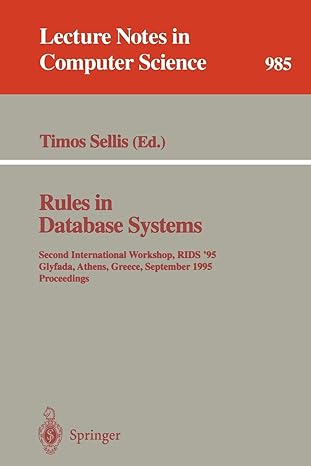Question
Part 2 - Fragments Depending on the data placed in it by the transport data protocol, an IPv4 packet may range in size from 20
Part 2 - Fragments
Depending on the data placed in it by the transport data protocol, an IPv4 packet may range in size from 20 bytes to 65,536 bytes. However, not all components of a network are able to handle packets this big. For example, Ethernet connections can handle a maximum packet size of only 1,500 bytes. This means that a packet too large for a connection must be fragmented in order to send it.
When a packet needs to be fragmented, each fragment is put in its own IP packet, and the identification, flag, and fragment offset work together to ensure the original packet can be rebuilt. The identification is the same for every fragment packet. The fragment offset tells where in the fragment the packet goes. And, all but the last fragment are flagged for more fragments. The flag on the last fragment will remain 0 to identify when the packet is complete.
Imagine a packet contains the message This is the full message., but it passes through a part of the network where only four characters can be sent at a time. The first fragment will contain This with a fragment offset of 0 and a flag of more fragments. The second segment will contain is with a fragment offset of 4 and a flag of more fragments. The very last packet will contain . with a fragment offset of 24 and no flag.
2a) What would the third packet contain? What will its fragment offset be? Will it be flagged, and if so with what? Explain.
Next imagine that the first fragment with This passes into a connection where only two characters can be sent at a time. Again, the identification would remain the same as before. One new fragment would contain Th with a fragment offset of 0 and a flag of more fragments. The other new fragment would contain is with a fragment offset of 2 and a flag of more fragments.
2b) When the fragment is broken into more fragments, why does the last new fragment keep the more fragments flag rather than being set to 0 or no flag?
For real IP packets, the information is measured in bytes rather than in characters like this example, but this is how IP fragmentation proceeds. Then, the original packet has to be put back together.
Again, consider an example using character offsets instead of the bytes offset. The following packets are received.
| Identification | Character Offset | Flag | Content |
| 412 | 6 | more fragments | eas |
| 412 | 0 | more fragments | Well r |
| 9843 | 0 | more fragments | Goo |
| 9843 | 3 | more fragments | d w |
| 412 | 12 | 0 / none | bled! |
| 412 | 9 | more fragments | sem |
| 9843 | 6 | 0 / none | ork! |
2c) What are the original packet contents?
Step by Step Solution
There are 3 Steps involved in it
Step: 1

Get Instant Access to Expert-Tailored Solutions
See step-by-step solutions with expert insights and AI powered tools for academic success
Step: 2

Step: 3

Ace Your Homework with AI
Get the answers you need in no time with our AI-driven, step-by-step assistance
Get Started


